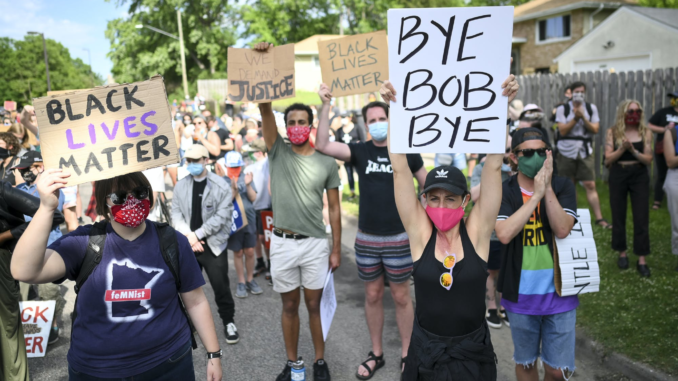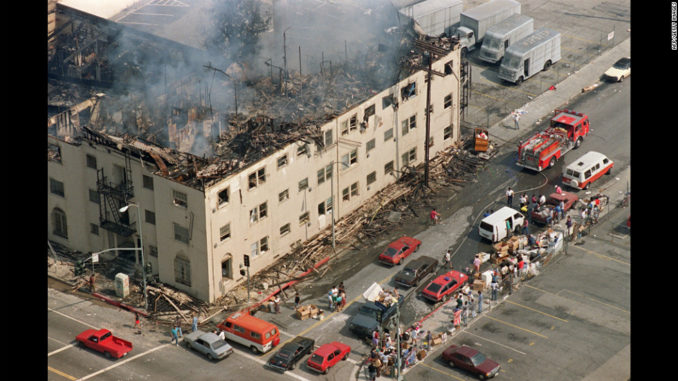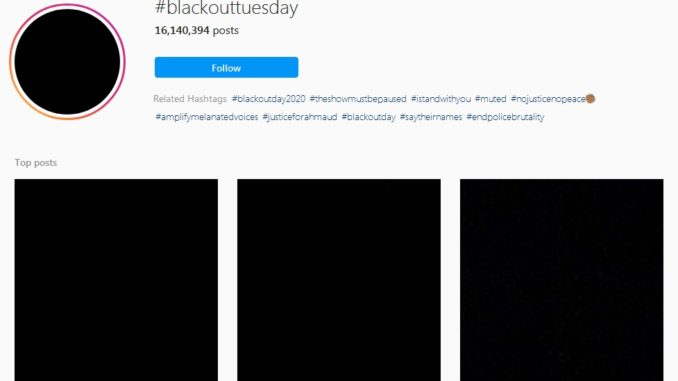
Monday May 25th, Minneapolis, George Floyd, a Black man, had the police called on him after a storeowner suspected him of paying with counterfeit money. Police officer David Chauvin arrived on the scene. Moments later bystanders witnessed and recorded David Chauvin kneeling on George Floyd’s neck for nine minutes, before an ambulance arrived. Paramedics declared him dead, it was later confirmed he died of asphyxiation.
This isn’t the first time that police brutality has claimed the life of an innocent Black man, but Americans horrified by this video were determined to make it the last. The streets of several US cities erupted in protests in the midst of a pandemic. The message was clear, Americans wanted the violence to end. They wanted justice for George Floyd.
The streets of Minneapolis were barely recognizable as police armed with tear gas, concussion grenades and non-lethal firearms stormed the streets to quell the protests.
This was the first time all fifty states in America protested together. Several other major cities around the world such as Hong Kong, Berlin, Paris, Toronto, Brisbane, Lagos and Johannesburg marched in solidarity with the United States people, making it the largest civil rights movement in history.
The last time a mass protest against police brutality, even remotely close to this scale occurred was in 1992. Rodney King, a Black motorist was beaten by the police in Los Angeles. When the jury acquitted all four officers, the city broke out in protests and riots.

There is a distinct difference between the current events and those of 1992 the implementation of social media. In 1992 people didn’t have Twitter or Facebook or Instagram, so coordinating mass protests was more difficult. Today groups such as Black Lives Matter and individual activists use these platforms to plan protests and mobilize hundreds and thousands of people at once.
The use of social media in political movements first occurred during the Arab Spring. In the series of anti-government protests in Middle East and African countries Tunisia, Egypt, Libya, Yemen, Syria, and Bahrain, social media was widely used to share information about the events, and organize demonstrations. The tool became so important and widespread, that even their respective governments tried using social media in an attempt to learn of the protester’s plans in order to bring a stop to them. The argument could be made that social media was instrumental in the Arab Spring.
Thomas Gibbins, a political scientist in Argentina says that “Social media is often used by groups to organize themselves for and during protests. Without social media it would be very difficult for these groups to coordinate and create a mass. Police use it to monitor where people be congregating and to try to get to the pulse of the movement”
A lot has been shared through social media during the current protests. Celebrities and organizations such as LeBron James, George Takei, the Toronto Raptors, Blue Jays, McDonalds, and others have shared their own messages of the protests and their own views on George Floyds death.
They were one of us:
— McDonald's (@McDonalds) June 3, 2020
Trayvon Martin. Michael Brown. Alton Sterling. Botham Jean. Atatiana Jefferson. Ahmaud Arbery. George Floyd. pic.twitter.com/s1UhP5vncv
Twitter and Instagram saw a trend Tuesday June 2nd, with people posting a black square using the hashtag #BlackOutTuesday. What was #BlackOutTuesday? It was started by Atlantic Records music executives Jamila Thomas and Brianna Agyemang. According to their website the purpose was “a day to take a beat for an honest, reflective and productive conversation about what actions we need to collectively take to support the Black community”. It garnered a lot of attention, and was quite successful in raising awareness as thousands of people participated. However activists, such as Anthony James Williams, quickly pointed out that this trend could do more harm than good, as it could block crucial information about the protests. Others argued that silencing the movement, even for a day, was going to be detrimental to the cause. There was a lot of controversy surrounding this movement, which only amplified the importance of social media in this movement.

Police have their own presence on social media, most departments update the public on what is happening in their areas. Toronto Police are no exception to this, though they do not use social media to follow the protests movements. A Media Relations officer with the Toronto Police said that the police are not monitoring the situation over social media, instead officers are updated on any protest in the city, those officers will monitor the crowd.
Social media has changed the way protests happen and increased the impact of them globally. Its ability to instantaneously spread news across the world has provided many with access to information they may not have had before. It has helped the Black Lives Matter movement go beyond the protests, and continuously grow.

Be the first to comment